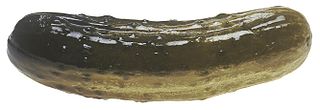“Cheminformatics is hard.”
— Paul Finn
I would add: “Chemistry is nuanced”… Just as there are many different ways of drawing the same molecule, SMILES is flexible enough to allow us to write the same molecule in different ways. While canonical SMILES can resolve this problem, we sometimes have different problem. In some situations, e.g., in machine learning, we need to map all these variants back to the same molecule. We also need to make sure we clean up our input molecules and eliminate invalid or incomplete structures.
Different Versions of the Same Molecule: Salt, Neutral or Charged?
Sometimes, a chemical supplier or compound vendor provides a salt of the compound, e.g., sodium acetate, but all we care about is the organic anion, i.e., the acetate. Very often, our models are built on the assumption we have only one molecule as input—but a salt will appear as two molecules (the sodium ion and the acetate ion). We might also have been given just the negatively-charged acetate instead of the neutral acetic acid.
Tautomers
Another important chemical phenomenon exists where apparently different molecules with identical heavy atoms and a nearby hydrogen can be easily interconverted: tautomers. By moving just one hydrogen atom and exchanging adjacent bond orders, the molecule can convert from one form to another. Usually, one tautomeric form is most stable. Warfarin, a blood-thinning drug, can exist in solution in 40 distinct tautomeric forms. A famous example is keto-enol tautomerism: for example, ethenol (not ethanol) can interconvert with the ketone form. When one form is more stable than the other form(s), we need to make sure we convert the less stable form(s) into the most stable form. Ethenol, a.k.a. vinyl alcohol, (SMILES: ‘C=CO[H]’), will be more stable when it is in the ketone form (SMILES: ‘CC(=O)([H])’):
from IPython.display import SVG # to use Scalar Vector Graphics (SVG) not bitmaps, for cleaner lines
import rdkit
from rdkit import Chem
from rdkit.Chem import AllChem
from rdkit.Chem import Draw # to draw molecules
from rdkit.Chem.Draw import IPythonConsole # to draw inline in iPython
from rdkit.Chem import rdDepictor # to generate 2D depictions of molecules
from rdkit.Chem.Draw import rdMolDraw2D # to draw 2D molecules using vectors
AllChem.ReactionFromSmarts('[C:1]-[C:2](-[O:3]-[H:4])>>[C:1]-[C:2](=[O:3])(-[H:4])')
Continue reading 








